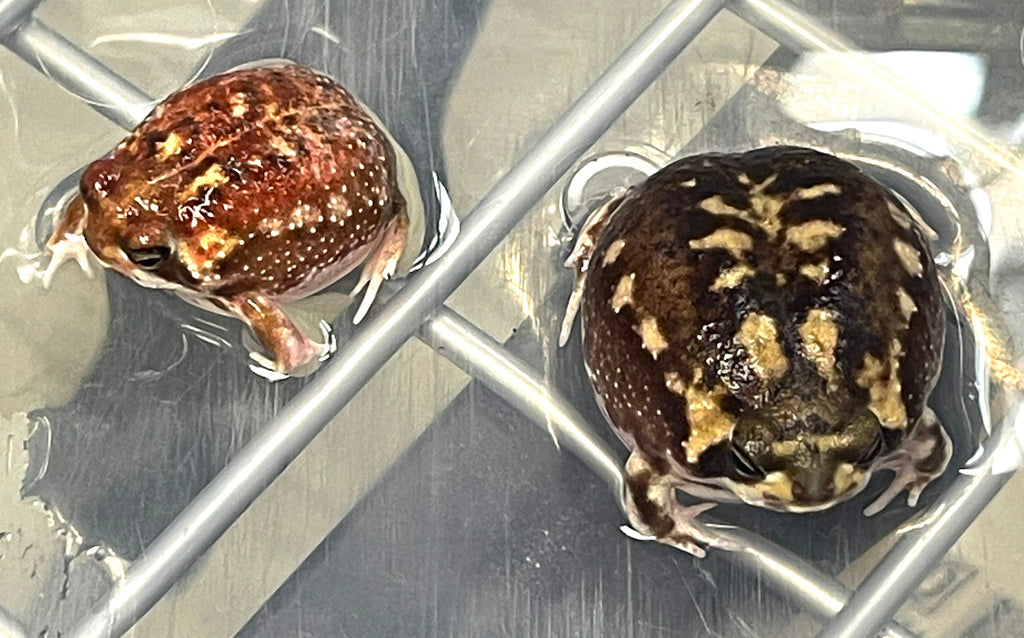Discover Exotic Rain Frog for Sale: Your Gateway to Special Amphibian Pets!
Wiki Article
The Finest Reptile Enclosures: Just How to Develop the Perfect Environment
Producing the best environment for reptiles is not nearly positioning them in a container or room; it includes a thoughtful consideration of different elements that add to their overall wellness. From the size of the room to the type of substrate utilized, every element plays an important function in offering an environment where your reptile can thrive. By understanding the details demands of your reptile types and executing the best environment arrangement, you can ensure their health and joy in bondage.Selecting the Right Enclosure Dimension
When choosing an enclosure dimension for reptiles, it is imperative to consider their all-natural habits and space needs to ensure their well-being and health and wellness. When it comes to habitat space, various reptile species have differing needs. Arboreal varieties like chameleons or tree snakes call for vertical room for climbing up and perching, while terrestrial varieties such as bearded dragons or leopard geckos need even more floor room for checking out and thermoregulation. Marine turtles like red-eared sliders require units with both water and acreage for swimming and basking.A general guideline of thumb is to provide enough room for the reptile to exhibit natural behaviors, such as basking, concealing, climbing up, and foraging. By carefully considering the specific needs of the reptile species in question, proprietors can develop an ideal and improving environment that promotes general well-being and encourages natural actions.
Establishing Up Correct Burner
To make sure the wellness and health of reptiles in their enclosures, it is necessary to carefully establish correct home heating aspects. Reptiles are ectothermic creatures, suggesting they count on outside heat sources to regulate their body temperature level. When establishing heating aspects in a reptile room, it is critical to take into consideration the certain temperature level requirements of the varieties you are looking after. Various reptiles have differing temperature requires based upon their natural environment, so it is very important to research and recognize these demands.One effective and typical home heating aspect for reptile units is a heat light or ceramic heat emitter. These warm resources can be made use of to create a temperature level gradient within the room, permitting reptiles to move in between warmer and cooler areas as needed. In addition, under-tank heating pads or warm floor coverings can be used to supply belly warm, which is specifically advantageous for reptiles that call for extra warmth to help in food digestion.
Checking the temperature within the enclosure utilizing a thermometer is vital to ensure that the heating elements are preserving the proper temperature level variety for your reptile. Regularly check and adjust the heating aspects as needed to create a healthy and comfortable setting for your scaly good friend.
Picking Appropriate Lights Components

Giving the Ideal Substrate
Selecting the appropriate substratum is necessary for producing a comfortable and suitable environment for reptiles in their units. Some reptiles, such as desert-dwelling types like bearded dragons, flourish on substratums like calcium sand or reptile rug, while others, like ball pythons, prefer coconut husk or aspen bed linens to preserve moisture degrees.Avoid substratums that can cause impaction, such as loose substratums like sand or gravel, particularly for reptiles recognized to ingest their bed linen. Regularly cleaning and changing more helpful hints the substratum is important to make sure a sanitary and tidy environment for your reptile.
Decorating for Enrichment and Convenience
Taking into consideration the substrate's function in giving a foundation for natural actions and preserving an ideal environment, enhancing the reptile room with correct decors is essential for both enrichment and convenience. Decors such as branches, rocks, hideouts, and artificial plants not only create a much more aesthetically enticing environment yet also serve functional functions. Branches supply climbing up possibilities for arboreal varieties, while rocks can act as basking spots for warmth. Hideouts provide shelter and safety, minimizing stress and anxiety degrees for the reptile. Fabricated plants not just boost the visual appeals however likewise offer hiding spots and enrichment by allowing the reptile to communicate and explore with its environment. When embellishing the enclosure, it is vital to think about the reptile's species-specific requirements and behaviors to produce an area that advertises physical and psychological wellness. By including a selection of designs that mimic the reptile's natural environment, owners can guarantee their family pet's comfort and boost their all-natural instincts, eventually bring about a happier and healthier reptile.Verdict

Producing the ideal environment for reptiles is not simply about placing them in a container or room; it includes a thoughtful consideration of numerous factors that add to their total wellness.Choosing the appropriate substratum is necessary for producing a comfy and ideal environment for reptiles in their enclosures. Some reptiles, such as desert-dwelling types like bearded dragons, flourish on substrates like calcium sand or reptile carpet, while others, like ball pythons, favor coconut husk or aspen bed linens to maintain moisture levels.
By including a selection of decors that imitate the reptile's natural habitat, owners can ensure their pet dog's convenience and promote their this contact form natural instincts, ultimately leading to a happier and much healthier reptile.
In final thought, developing the perfect environment for reptiles entails choosing the proper room size, heating aspects, lighting fixtures, substratum, and decors.
Report this wiki page